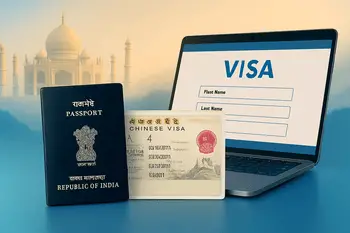
Chinese characters are the written symbols used in the Chinese language.
Each character represents a syllable and conveys meaning.
Unlike alphabetical scripts, Chinese characters are logographic, meaning they are composed of pictures and symbols that often reflect their meaning or pronunciation.
Learning Chinese characters can feel daunting, but with the right approach, expats can master this rewarding skill.
This guide will provide a detailed overview of Chinese characters, their structure, and practical tips for learning them effectively.
The History of Chinese Characters
Chinese characters have a history spanning over 3,000 years.
They originated from ancient inscriptions on bones and shells, known as oracle bone script, and evolved through various stages, including seal script and clerical script, to the standardized forms we see today.
These characters are not just a means of communication but also a window into Chinese culture, history, and traditions.
For a deeper dive into the history of Chinese characters, you can explore resources like China Highlights.
Why Expats Should Learn Chinese Characters
Understanding Chinese characters can significantly enhance your experience living in China or other Chinese-speaking regions.
Here are some practical benefits:
- Navigating Daily Life: Reading signs, menus, and public transport information becomes much easier.
- Cultural Connection: Learning characters deepens your appreciation of Chinese culture and traditions.
- Independence: While pinyin (the Romanized system for Chinese pronunciation) is helpful, many signs and documents are written exclusively in characters.
The Structure of Chinese Characters
Basic Components
Chinese characters are built using strokes, which are the individual lines or dots that form a character.
There are 8 basic strokes, such as horizontal (横), vertical (竖), and dot (点).
These strokes combine to create more complex characters.
Stroke Order and Direction
Stroke order follows specific rules, typically starting from top to bottom and left to right.
For example, the character “永” (eternity) is often used to teach stroke order because it contains all the basic strokes.
Learning proper stroke order is essential for writing neatly and recognizing characters.
You can practice stroke order using tools like Skritter or printable worksheets from Arch Chinese.
The Importance of Radicals
Radicals are the building blocks of Chinese characters.
They often provide clues about the meaning or pronunciation of a character.
For example:
- The radical “氵” (three water dots) appears in characters related to water, such as “河” (river) and “海” (sea).
- The radical “木” (wood) is found in characters like “林” (forest) and “树” (tree).
Understanding radicals can make it easier to guess the meaning of unfamiliar characters.
Types of Chinese Characters
Chinese characters can be categorized into several types based on their origin and structure:
1. Pictograms
These characters are derived from simplified drawings of objects.
Examples include:
- “山” (mountain)
- “日” (sun)
2. Ideograms
Ideograms represent abstract ideas.
For instance:
- “一” (one) represents a single horizontal line.
- “上” (above) uses a line above a horizontal base to indicate “up.”
3. Phono-semantic Compounds
These characters combine a semantic component (meaning) and a phonetic component (sound).
For example:
- “妈” (mother) includes the radical “女” (woman) and the phonetic component “马” (ma).
For more examples and explanations, check out Omniglot’s guide to Chinese characters.
Simplified vs. Traditional Characters
Differences Between Simplified and Traditional
Simplified characters, used in mainland China and Singapore, have fewer strokes and are easier to write. Traditional characters, used in Taiwan, Hong Kong, and Macau, retain more complex and historical forms.
For example:
- Simplified: “爱” (love)
- Traditional: “愛” (love)
Which One Should Expats Learn?
If you’re living in mainland China, focus on simplified characters. However, if you’re in Taiwan or Hong Kong, traditional characters are more practical. Apps like Pleco allow you to switch between both systems for practice.
Practical Tips for Learning Chinese Characters
1. Start With Commonly Used Characters
Focus on high-frequency characters, such as those for numbers, directions, and food.
For example:
- Numbers: 一 (one), 二 (two), 三 (three)
- Directions: 上 (up), 下 (down), 左 (left), 右 (right)
- Food: 饭 (rice), 水 (water), 茶 (tea)
2. Leverage Technology and Apps
Apps like Pleco, Skritter, and Anki are excellent for learning and memorizing characters.
They use spaced repetition to help you retain information.
3. Practice Writing and Reading Regularly
Writing characters repeatedly helps reinforce stroke order and structure.
Reading menus, signs, and labels in Chinese can also improve recognition.
4. Join a Language Class
Structured classes provide expert guidance and a supportive learning environment.
Platforms like Italki or local language schools can be great options.
5. Learn Contextual Usage
Understanding how characters fit into sentences and phrases makes learning more intuitive.
For example, “谢谢” (xièxiè) means “thank you,” and “请问” (qǐngwèn) means “excuse me.”
Common Challenges and How to Overcome Them
1. Recognizing Similar Characters
Characters like “日” (sun) and “目” (eye) can look alike.
Pay attention to subtle differences and practice regularly.
2. Remembering Stroke Order
Use guides and practice sheets to master proper stroke order.
Websites like YellowBridge offer stroke order animations.
3. Staying Motivated
Set achievable goals, reward progress, and remind yourself of the benefits of learning Chinese characters.
Fun Ways to Engage With Chinese Characters
1. Use Flashcards and Games
Gamify your learning with apps like Quizlet or flashcard decks on Anki.
2. Explore Chinese Calligraphy
Calligraphy combines art and language, offering a creative way to connect with Chinese characters.
Look for local calligraphy workshops or online tutorials.
3. Watch Chinese Movies and Shows
Subtitled content helps you link spoken words to written characters.
Platforms like Viki or Youku offer a wide range of Chinese-language shows.
Conclusion
Learning Chinese characters is a challenging but rewarding journey.
By understanding their structure, practicing regularly, and using the right tools, expats can navigate daily life in China with greater ease and confidence.
Beyond practicality, mastering Chinese characters opens the door to a deeper appreciation of Chinese culture and history.
For further reading, check out:
- Mandarin Blueprint for structured learning programs.
- Chinese Grammar Wiki for grammar and usage tips.
FAQs
- Why are Chinese characters important for expats?
They help with daily tasks like reading signs, ordering food, and understanding documents. - How long does it take to learn Chinese characters?
It depends on dedication, but mastering basic characters can take a few months of consistent effort. - What are some of the best apps for learning Chinese characters?
Pleco, Skritter, and Anki are excellent for character learning and memorization. - Can I get by in China without learning characters?
While possible in larger cities, knowing characters greatly enhances your experience and independence. - Are there shortcuts to mastering Chinese characters?
There are no shortcuts, but focusing on high-frequency characters and practicing daily can accelerate your progress.


